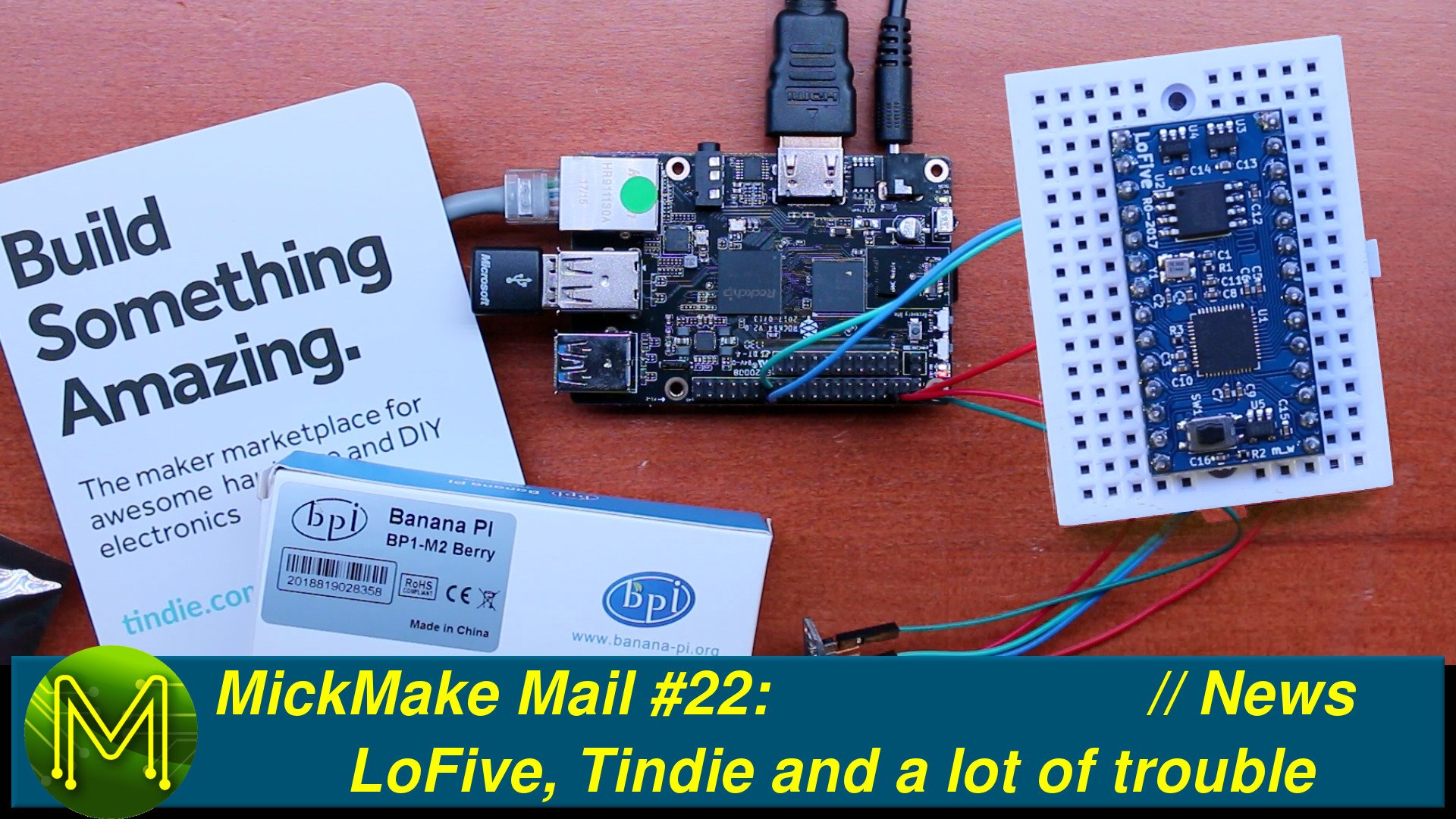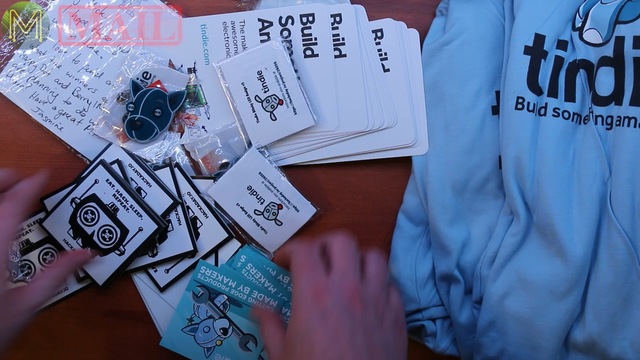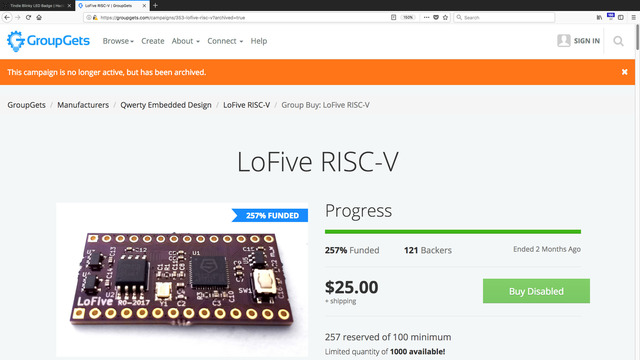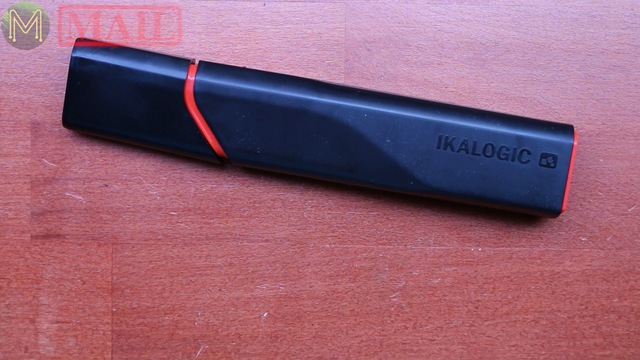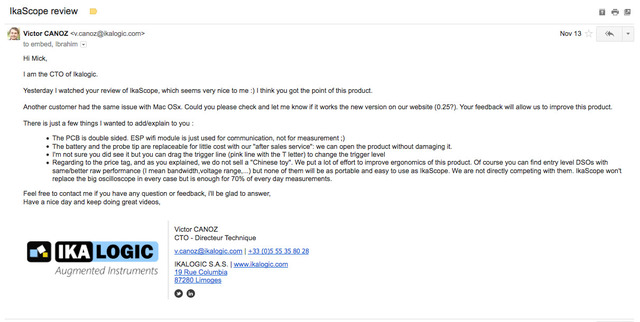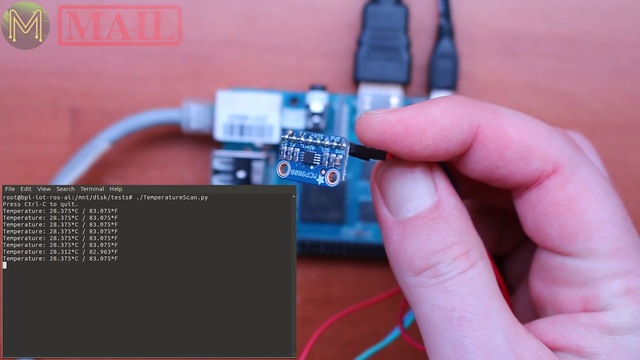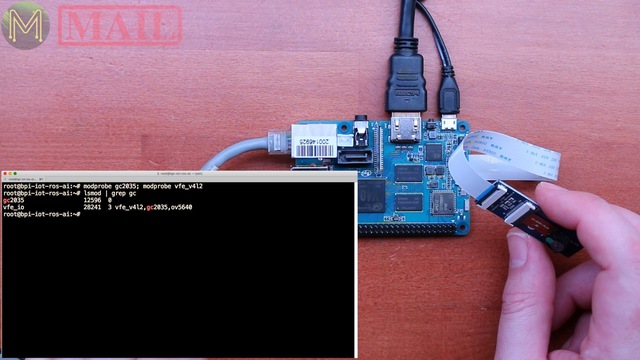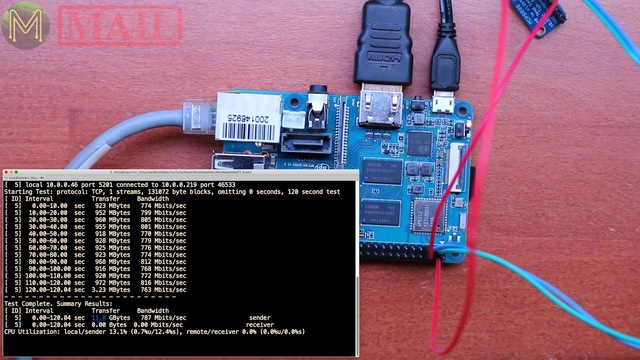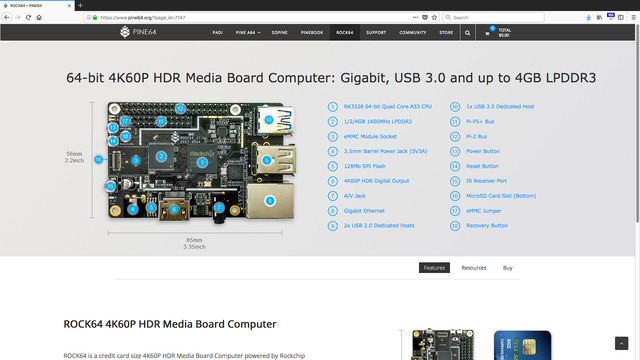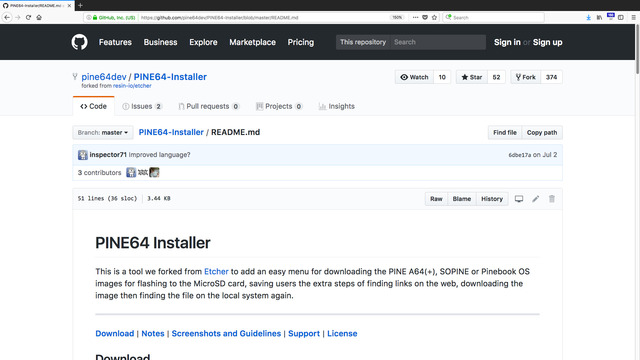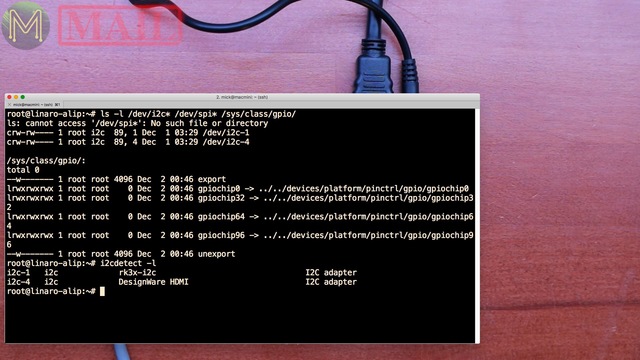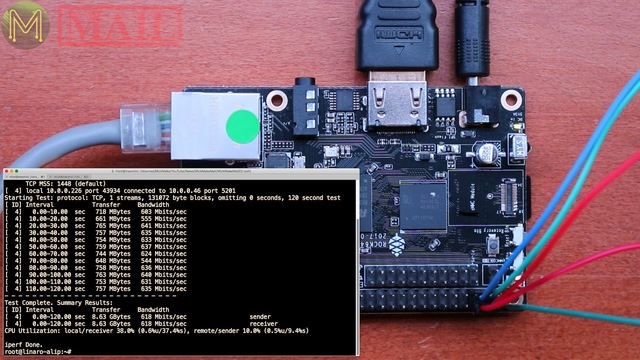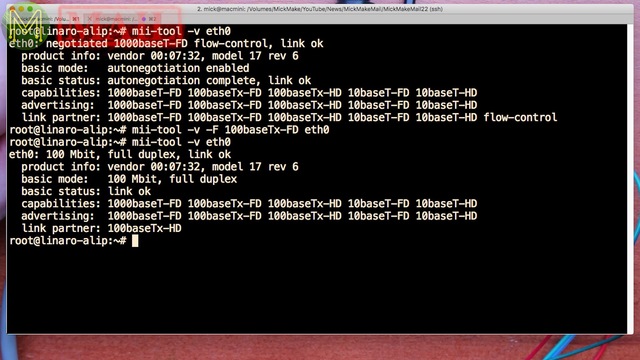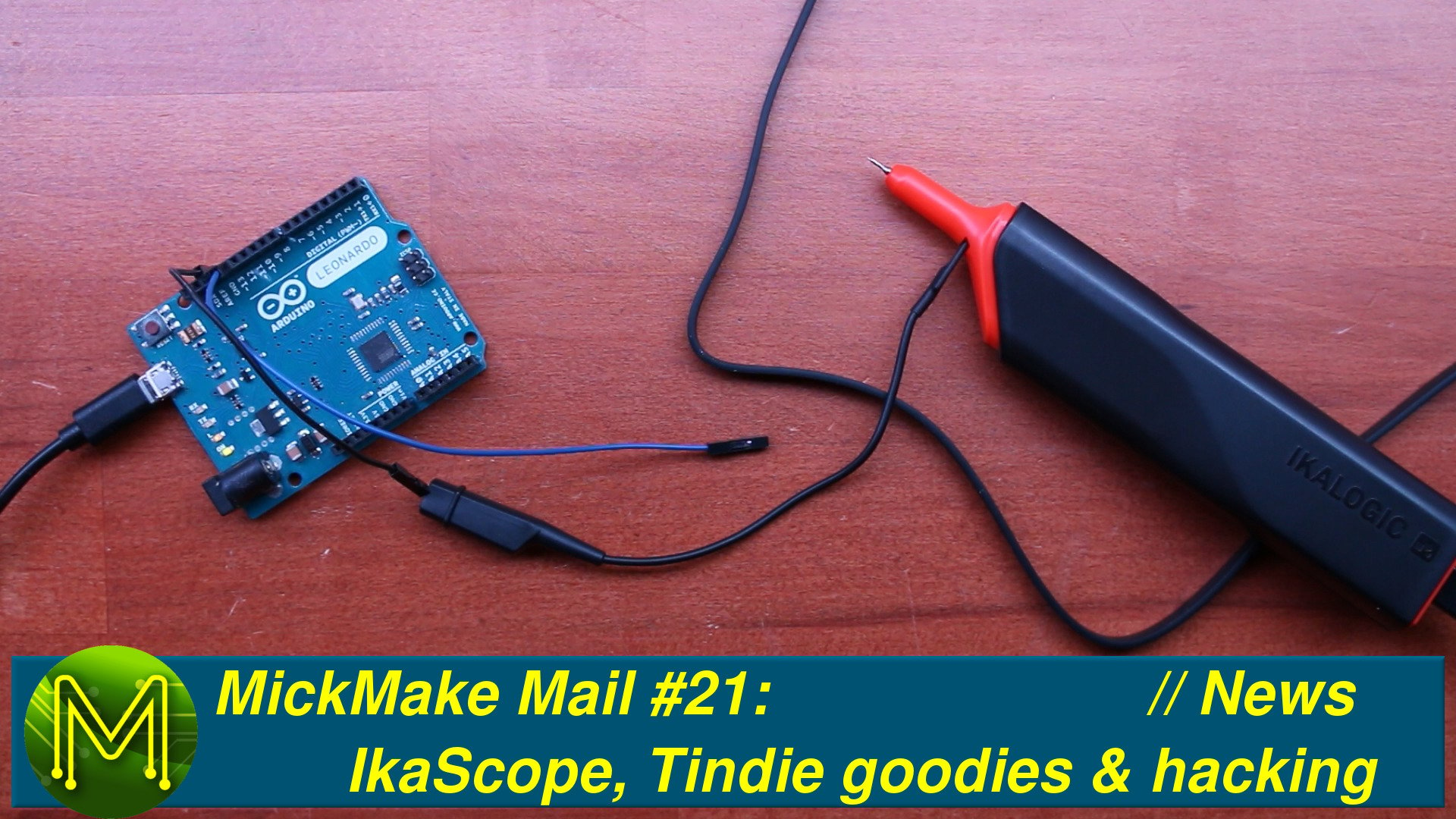MickMake Mail #22: LoFive, Tindie and a lot of trouble // News
After a bit of a hiatus MickMake is back with another mailbag. This time there’s some Tindie goodies for the winners of the MickMake/Tindie competition, also a GroupGets backed #LoFive, #IkaScope hi-res photo update and a short look at the #Rock64 and #BananaPiM2Berry.
Tindie goodies
Jasmine, (the top dog of Tindie), sent me some goodies to include in the bundle of stuff I’ll be sending the winners of the Tindie/MickMake competition - Tees, Blink LED badge and some stickers. Nice!LoFive
The LoFive is another Michael Welling creation which we saw in Weekly Roundup #43. Has some pretty cool specs for such a tiny and cheap board.- MCU – SiFive Freedom E310 (FE310) 32-bit RV32IMAC processor @ up to 320+ MHz (1.61 DMIPS/MHz) / 16 KB RAM
- Storage - 128-Mbit SPI flash (ISSI IS25LP128)
- Expansion - 2x 14-pin headers with JTAG, GPIO, PWM, SPI, UART, 5V, 3.3V and GND
- Misc - 1x reset button, 16 MHz crystal
- Power Supply - 5V via pin 1 on header; Operating Voltage: 3.3 V and 1.8 V
- Dimensions - 38 x 18 mm (estimated)
- CERN Open Hardware License v1.2 Alas my FTDI adapter was missing and there wasn’t time this week to use a Pi / Arduino / “pick my favourite hack” to talk to it. Next time…
IkaScope update
I had an update from the CEO of IkaLogic, (Victor Canoz), on my mini review in MickMake Mail #21. Apart from updating on some key points, he pointed out my “brain fart” and that the IkaScope was indeed double sided. Had a feeling that there would be some more components as that poor old ESP8266 would be struggling to keep up with things.I also managed to take some hi-res photos of both sides, (click on the images to take you there).Banana Pi M2 Berry
The problem I have with doing “quick reviews” is that you just don’t do it justice. I ran into a number of things that weren’t working for me that, had I spent a bit more time, would have worked for me.I2C was no issue…but SPI and MIPI-CSI/DSI were giving me grief. Needless to say, it should be working, but it wasn’t.Ethernet speeds were pretty decent coming in at 787Mb/s. IMO anything above 700Mb/s is decent, 800Mb/s and over is great, and anything above 900Mb/s is really what most PCs/notebooks are capable of.My overall impression of the Banana Pi M2 Berry is good. All schematics are there, they’re striving to build up the community and the board is designed well. We’ll see how it fares when I do more thorough review of it.
Rock64
The Pine64 guys were off to a rocky start with the original Pine64, (here, here and here), due to a number of reasons concerning marketing and setting expectations. It’s a hard road to undo that sort of damage to your reputation and the Pine64 board I have here is a constant reminder of that.Things are improving with the Rock64. They’ve chosen an up-and-coming SoC and they’re setting the expectations right out of the gate. They’re not promising the world, but giving it as is.
Heck they even have their own installer that saves you the hassle of finding the official images.Needless to say my “quick review” had the same issues as the Banana Pi. Missing SPI would have been something fixed with the Device Tree Table, but I2C worked out of the box.Network speeds were, sort of, OK. Within the acceptable range, but not as fast as it should be.However, there is the famous Ethernet lock-up issue present, which has affected numerous other SoCs and Ethernet chips in the past. A fact of using a newer SoC with little OSS support.However, it’s a vast improvement on the original Pine64. Before you delve in to any SBCs be aware that they are Maker boards and not polished products. They will have some rough edges.

